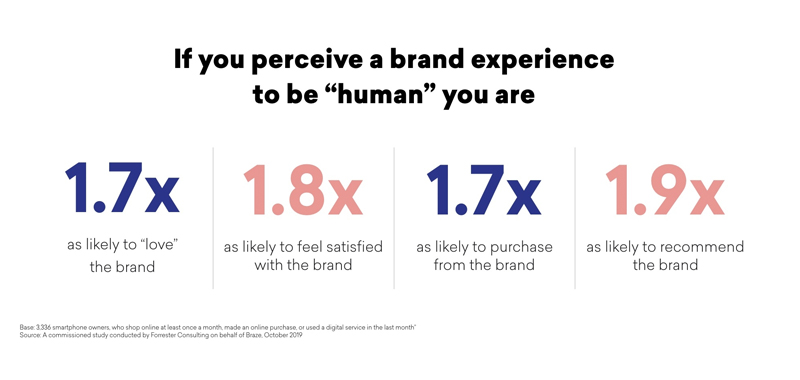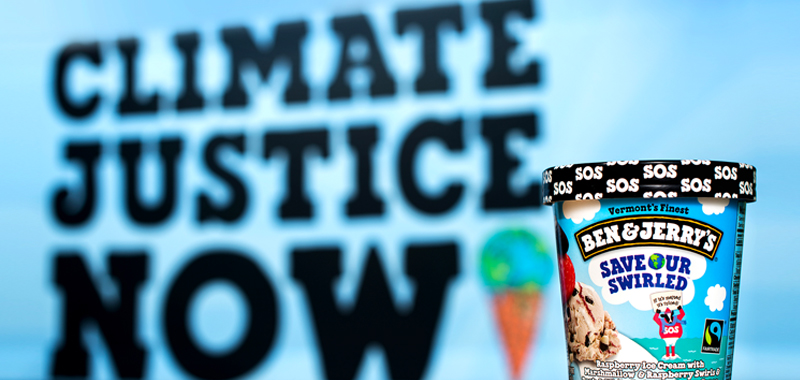January 7, 2021
Brand is Dead. Long Live Brand.
David Brashears

How relying on past success for your brand may not translate in the 20s.
While so many brands are still putting the pieces back together from all that happened in 2020, time has continued to march forward without pause. 2021 is here, and it’s time to take a long sober look at what consumers have mandated for the new era of brand marketing. Having worked in this industry through the crash of the first internet bubble, the tragedy of 9/11, a mortgage crisis, and now a global pandemic, I can give one point of reassurance. The world is not ending. Well, I should clarify a bit. The world is only ending for some. If you’re projecting your future brand growth based on past strategies, then maybe the world is ending—or at least will be getting smaller.
This is what systemic change actually feels like. It’s an anxiety-inducing exercise that throws into scrutiny every relationship individuals have. With confidence in social justice, political ethics, corporate responsibility, job security, and many other critical measures of consumer behavior at an all-time low, the fact is we’re changing as a people, and that change is going to impact how we engage and respond to brand messaging.
So, here are three things to consider as you look to evolve your brand persona to keep a positive and genuine relationship with your loyal audience.

Brand Humanity
One thing that became painfully evident for some brands in 2020 is that their brand loyalists expect more from their economic partnership with companies. The days of making a great product and expecting it to be embraced on its own merits—separate from things like corporate culture, CSR, and proactive positive advocacy—are behind us. It’s time to refocus and take an honest look at your brand’s human connection.
There’s actually even a name for it now, Brand Humanity Index (BHI), and it’s becoming a core KPI for brands that want to stay relevant to a well-informed and increasingly restless consumer base. Now more than ever, your brand followers are demanding companies do more with their influence. Empathy is the new gold standard and central mandate of true brand humanity.
This is the centerpiece of what our agency calls “cult branding.” Creating a genuine emotional and identifiable connection between individuals and your brand position is how you inspire real loyalty from your brand followers, regardless of age or other demographic data.

Brand Conviction
One of the first areas that people are seeking more transparency and accountability from the brand’s they support is in what those brands actually stand for. The old adage of, “if you don’t stand for something, you’ll fall for anything” is now being attached to large corporations by their customers and for many, it’s been a difficult lesson to learn.
Many successful brands that have been riding the fence, and trying to stay off the radar, have suffered backlash in the courts of public opinion. Silence is now suspect, and inactivity by companies with the resources to affect change is a dangerous indictment on brand equity. Consumers want to know where companies stand on important social issues.
This is where a strong public relations message can play a dramatic role in helping a brand present their social position without derailing other marketing messaging. It’s key that both messages are in harmony, however, so ad teams and PR teams need to be working together to ensure that a genuine brand message is maintained at all times. Having ad campaigns and PR messaging in conflict can cause dramatic negative impact on credibility.
Making a strong stand on issues that aligns honestly with your corporate culture and mission may cause some negative feedback by some people. You have to have the stomach to stand your ground and defend your position in order to win the trust of your core audience. That means that you’re going to need to work closely with your executive team and your agency partner to make sure that your convictions align with both your internal culture and your external target audience.

Brand Equity Sharing
The other thing that many large brands have realized over the past few years is that their customers are now expecting to have a very real and substantial voice in how the brands they support do business. This is a complicated and high-stakes process to undertake with your brand(s). However, the return on getting it right can be some of the most powerful and sustainable sales growth within a company’s history.
Brand equity sharing has been an evolving concept that has gone hand-in-hand with many company’s engagement with their followers through social media outlets. As more personality has been given to a brand, their followers have developed a new perception, and expectation, to be able to engage companies as they would any other person within their circle of influence. Having a well-developed brand social media management team that can respond quickly and accurately to feedback received from loyal brand advocates can help keep this dialogue pointed in a positive direction while feeling organic.
Now more than ever, individuals are seeing their economic support of products and services as a path to influence. Brands need to be able to embrace these contributions and act on them in a tangible way that encourages more interaction while still being able to defend and sustain the brand’s own humanity and convictions. It’s a balancing act, and it’s not always going to be easy in the face of backlash and public criticism. Our agency’s social media and public relations teams work very closely together with our brand partners to help navigate each and every one of these opportunities.
The payoff, however, is that a consumer that genuinely believes they have equity in a brand is exponentially more likely to act as an advocate for that brand in their own circles of influence. Word-of-mouth is still one of the most powerful, and undervalued, marketing assets that can be deployed. In the modern era of brand evolution, that means that you have to get granular with your engagement to protect your market segment and grow your reach.
The 20’s are certainly “roaring” once again. Probably not in the way that most people would have hoped for, but hey… it’s change. You can weep for what has been lost, or you can sow for tomorrow. Brand power has never been more compelling or volatile as it is right now. Everything is churning, but it continues to be driven by consumer belief in economic power. There will be some big opportunities for the insightful few that embrace their new relationship with customers, and having a competent and compelling agency partner will be crucial. Our own clients have enjoyed continued historic growth through the many challenges 2020 threw at us. It has all linked back to having a strong understanding of what a brand needs to be to modern consumers and responding with genuine empathy and generosity.
I mean, I’ve just spent my holiday seeing advertisements from a certain travel brand’s adorable little gnome spokesperson telling me that, “it’s beginning to look a lot like you need a vacation” during the worst global pandemic in modern history, and major automotive manufacturers showing luxury cars with Christmas bows on them while unemployment rates are at an all-time high and unemployment benefits have run out and new support is held in stalemate by our federal legislators. So, I think it’s probably fair to say… there’s room for improvement.
If you’re ready to turn on your cult brand credibility and build a real relationship with your greatest resource (the buying public), then we should probably talk sooner rather than later. 2021 is here now, and you can’t hold your breath and hope things get better forever. Let’s make this a year that brand means something more than it has in the past. Let’s talk.
Get insights delivered straight to your inbox.